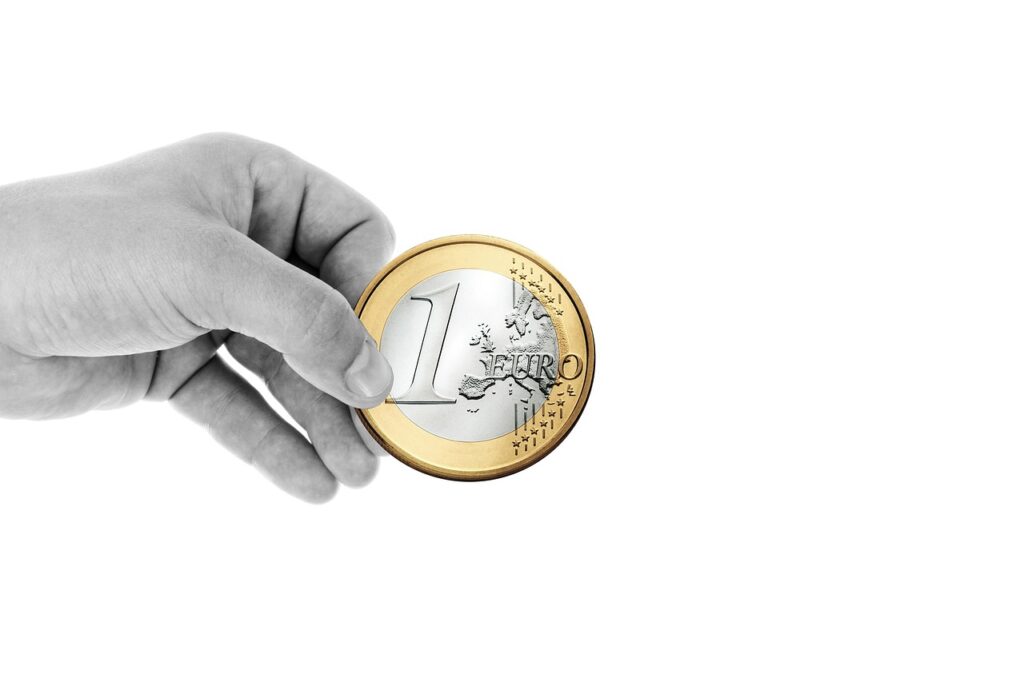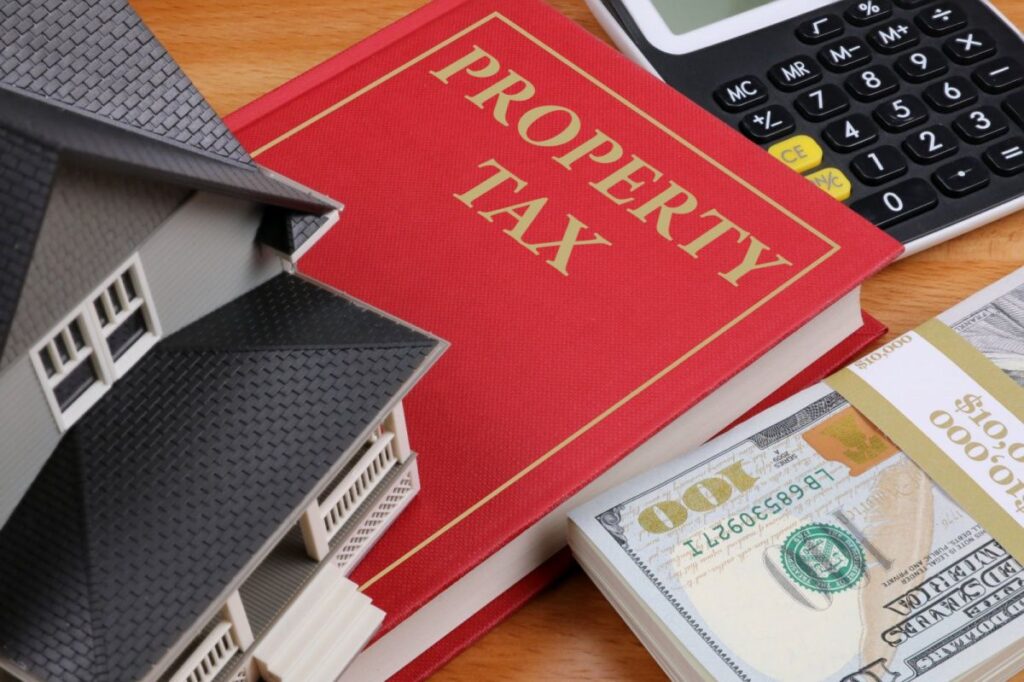The landscape of personal finance in the United States is on the cusp of a significant transformation, one that could profoundly influence the credit scores of millions of Americans and, by extension, their access to essential financial products. Later this year, the credit scoring behemoth FICO is set to integrate ‘buy now, pay later’ (BNPL) loan data into its calculations. This pivotal shift, as FICO itself articulated, reflects ‘the growing importance of BNPL loans in the U.S. credit ecosystem,’ a reality that has seen these installment plans surge in popularity across diverse consumer demographics.
This impending change is not merely a technical adjustment; it carries substantial implications for individuals seeking loans, mortgages, or even apartment rentals. While some consumers, particularly those with disciplined financial habits, may find opportunities to bolster their credit history, a significant portion of BNPL users—especially those grappling with missed payments or an accumulation of multiple loans—could face a decline in their scores. Moreover, research highlights a pervasive lack of awareness among BNPL users regarding these imminent updates and their potential repercussions, underscoring a critical need for comprehensive understanding.
This in-depth analysis aims to demystify these complex changes, providing a clear and precise overview of what the integration of BNPL data into FICO scores entails. We will examine the catalysts behind this development, explore the varied experiences of consumers with BNPL services, detail how these new models will function, and shed light on what individuals can anticipate as these updates roll out. Understanding these dynamics is paramount for anyone navigating the contemporary credit environment.
1. **The Imminent FICO Score 10 BNPL Changes and Their Rollout**FICO, the global credit analytics company whose models underpin the majority of U.S. lending decisions, officially announced earlier this year that it would be incorporating BNPL loan data into its calculations. This strategic move manifests in the introduction of two new scoring systems: FICO Score 10 BNPL and FICO Score 10 T BNPL. These models are poised to become available to lenders by the fall of 2025, marking a significant juncture in how consumer creditworthiness is assessed across the nation.
The core objective behind these new FICO models is to furnish lenders with a more holistic and accurate depiction of consumers’ repayment behaviors, thereby enabling them to make more informed and appropriate decisions concerning credit qualification. Julie May, the vice president and general manager of B2B Scores at FICO, articulated this vision, stating in June, “Buy Now, Pay Later loans are playing an increasingly important role in consumers’ financial lives. By expanding our FICO Score 10 Suite with new models designed to incorporate BNPL data, we’re enabling lenders to more accurately evaluate credit readiness, especially for consumers whose first credit experience is through BNPL products. This innovation also supports our mission to expand financial inclusion by helping more consumers gain access to credit.”
Historically, BNPL arrangements were largely excluded from conventional credit scoring models, meaning they typically did not register on a consumer’s credit report and thus could not adversely affect their score. As Rebecca Carter, a LegalShield provider attorney, noted, “Historically, BNPL arrangements were not factored into credit scoring and therefore could not negatively impact a consumer’s score. That will soon change.” This impending shift represents a deliberate effort to align credit scoring practices with evolving consumer payment trends, recognizing BNPL as an integral, and often introductory, component of many individuals’ financial lives.

2. **The Rapid Rise and Appeal of Buy Now, Pay Later (BNPL)**Buy Now, Pay Later services have witnessed an exponential surge in popularity, transforming into one of the fastest-growing payment options within the U.S. financial landscape. Estimates from Capital One Shopping reveal that some 81.5 million Americans utilized BNPL loans in 2024, with projections indicating a rise to as many as 91.5 million users this year. This widespread adoption is facilitated by the user-friendly platforms provided by popular companies such as Klarna, Affirm, and Afterpay, which make securing these installment loans remarkably accessible, often through mobile devices and frequently without the stringent requirements of traditional credit checks.
The allure of BNPL lies in its ability to offer consumers a straightforward mechanism to spread out the costs of purchases, typically with little to no interest, over a specified period, often divided into four payments with an initial 25 percent down payment. This flexibility can render both everyday and pricier acquisitions more manageable, acting as a crucial financial convenience. Furthermore, the softer credit checks associated with BNPL services broaden access to credit for a wider demographic, including individuals who might otherwise struggle to qualify for conventional credit lines.
The growing importance of BNPL products is particularly evident among younger generations, with Gen Z and Millennials leading the charge in adoption rates. A Bank of America report highlighted a significant acceleration in use among these cohorts over the past year. As Gerri Detweiler, a personal-finance writer and credit expert, observed, “Not everyone wants a credit card, not everyone needs a car loan,” suggesting that BNPL offers a valuable alternative for those seeking different credit solutions. Independent consumer advocates, such as Teresa Murray, consumer watchdog director at the U.S. Public Interest Research Group, also acknowledge this benefit, noting, “For people who don’t have mortgages or credit cards, this could be a way for them to build a credit record, as long as payments are made on time and reported accurately.”
Read more about: The Hidden Costs: 14 Everyday Purchases Americans Regret Most, and How to Reclaim Your Budget
3. **The Hidden Risks and Consumer Vulnerabilities with BNPL**While BNPL services present an appealing pathway to financing, they are not without considerable risks, which, if not carefully managed, can swiftly transform financial convenience into a potential debt trap. Experts have consistently voiced concerns that the perceived ease of these loans can lead to overspending and an accumulation of obligations that consumers may struggle to honor. The softer credit checks that contribute to BNPL’s accessibility also mean that individuals with less-than-stellar credit habits may find themselves in precarious financial situations.
Statistical data underscore these vulnerabilities. A representative survey conducted by LegalShield among over 2,000 adults revealed that 49 percent of BNPL users had missed payments in the past. This trend is corroborated by a LendingTree survey, which found that 41 percent of BNPL users reported making a late payment within the preceding 12 months, an increase from 34 percent the year prior. Moreover, the LegalShield survey highlighted a concerning pattern of overextension: two-thirds of users admitted to juggling more than one BNPL loan simultaneously, with a majority of those, 62 percent, managing more than five open loans at any given time.
The increasing reliance on BNPL for essential purchases further illustrates the underlying financial strain experienced by many users. Nearly half of LegalShield survey respondents, 47 percent, reported using BNPL for groceries, and 35 percent for medical bills, indicating a shift from elective purchases to necessities. This suggests that for some, BNPL is becoming a financial crutch rather than a discretionary spending tool, amplifying the potential for financial distress. As economist Aditi Routh of the Federal Reserve Bank of Kansas City commented, “BNPL users repaying late could be a sign of overspending, overextension of debt, or deterioration of their financial situation. And the increase in the share of BNPL users paying late could be the sign and it should be closely monitored by researchers, policymakers, and consumer advocacy groups.”
4. **Widespread Consumer Unawareness and Misconceptions about BNPL and FICO Changes**Despite the rapidly expanding footprint of Buy Now, Pay Later services in consumer finance, a significant segment of the American populace remains largely unaware of the imminent changes to how these loans will impact their credit scores. The LegalShield survey found that 76 percent of Americans actively rely on BNPL services, yet a striking 38 percent remained unaware that FICO would soon incorporate BNPL data into its scoring models. This disconnect highlights a critical information gap that could leave many consumers unprepared for the consequences of their BNPL usage.
Rebecca Carter, the LegalShield provider attorney, offered insight into this widespread unawareness, explaining, “It is not surprising that such a large percentage of consumers remain unaware of the upcoming FICO changes. Many individuals who rely on BNPL options are already in financially vulnerable situations and focused on meeting immediate needs.” She further elaborated that “Long-term considerations, such as the effect on credit scores, often do not receive the same level of attention in the moment,” pointing to a tendency for immediate financial pressures to overshadow future credit implications.
Beyond the direct impact on credit scores, consumer unawareness extends to the contractual terms and potential pitfalls embedded within BNPL arrangements. The LegalShield survey revealed additional concerns, with 62 percent of respondents reporting billing errors in the past and 45 percent stating they had faced legal or contractual disputes over their loans. This suggests that many users may not fully comprehend the fine print of these agreements, exposing them to risks such as unexpected added costs or interest if payments are delayed. The cumulative effect of multiple, seemingly ‘affordable’ BNPL obligations can easily be underestimated, leading to financial strain.

5. **FICO’s Rationale: Expanding Financial Inclusion and Lender Insights**FICO’s decision to integrate Buy Now, Pay Later data into its scoring models is rooted in a multifaceted rationale that centers on enhancing financial inclusion and providing lenders with more precise insights into consumer creditworthiness. As Julie May, FICO’s vice president and general manager of B2B Scores, stated, this innovation directly supports FICO’s “mission to expand financial inclusion by helping more consumers gain access to credit.” By capturing BNPL data, FICO aims to create a more comprehensive credit picture, particularly for individuals whose initial foray into credit might be through these popular installment products.
For a considerable period, the absence of BNPL data from traditional credit reports meant that a significant portion of consumers’ repayment behaviors remained invisible to lenders. This obscured view could disadvantage individuals who responsibly manage their BNPL obligations, preventing them from building a positive credit history that could facilitate access to larger loans or other credit products. The new FICO models are designed to rectify this, allowing the disciplined use of BNPL to potentially bolster credit scores and broaden financial opportunities.
The change also addresses an existing blind spot for lenders. Before this update, lenders lacked visibility into a consumer’s BNPL activity, creating what Adam Rust, director of financial services at the Consumer Federation of America, referred to as “phantom debt.” This hidden debt meant that lenders could not fully assess a borrower’s overall debt burden or their capacity to manage multiple obligations. By incorporating BNPL data, FICO aims to empower lenders to “more accurately evaluate credit readiness” and make lending decisions grounded in a fuller understanding of an applicant’s financial commitments and repayment discipline.
6. **The Mechanics of FICO Score Calculation and the New BNPL Models**To fully grasp the implications of the new FICO changes, it is essential to understand the fundamental mechanics of how FICO scores are calculated. A FICO score is a three-digit number derived from various factors in a consumer’s credit report, reflecting their credit risk. Timely payment of debt accounts for the largest portion, 35 percent of the score, emphasizing the paramount importance of consistent on-time payments. The amount of debt owed constitutes 30 percent, while the remainder incorporates factors such as the length of credit history, the diversity of credit accounts (credit mix), and the number of recently opened new lines of credit.
FICO employs multiple scoring models, each designed for different focuses, though FICO 8 remains the most widely used version by lenders. The upcoming changes introduce two new models: FICO Score 10 BNPL and FICO Score 10 T BNPL. While FICO 10 represents a static snapshot model, FICO 10 T incorporates a crucial enhancement: it looks at balance activity over a two-year period, allowing lenders to discern whether a consumer’s financial trends are positive or negative. Both these newer models will now systematically integrate BNPL activity into their calculations.
Initial simulations conducted in a joint study by FICO and Affirm, simulating the inclusion of BNPL data, indicate that the score impacts were generally consistent with the opening of a new account. This means that for the majority of consumers, scores either improved or decreased by approximately 10 points. This finding suggests that while the change is significant, the immediate numerical shift for many may be moderate, mirroring the effect of adding a new, responsibly managed, or occasionally mismanaged, tradeline to a credit report. The integration, notably, leverages BNPL data now available in Equifax’s consumer credit files, a partnership designed to ensure comprehensive data capture.
7. **Addressing ‘Phantom Debt’ and Enhancing Lender Visibility**Prior to FICO’s latest adjustments, a significant blind spot existed within the traditional credit ecosystem, often referred to as “phantom debt.” This term encapsulates the financial obligations, primarily from Buy Now, Pay Later loans, that remained unreported to major credit bureaus. For traditional lenders evaluating loan applications, this meant operating without a complete picture of an applicant’s financial commitments, potentially leading to inaccurate risk assessments.
FICO’s integration of BNPL data directly addresses this critical issue. By systematically incorporating these loan details into its new scoring models, FICO aims to illuminate these previously invisible financial activities. This move is designed to provide a more transparent and comprehensive view of a consumer’s total debt burden, ensuring that even smaller, installment-based loans are accounted for in credit evaluations.
The enhanced visibility offers substantial benefits to lenders. As Adam Rust, director of financial services at the Consumer Federation of America, pointed out, if lenders can see this data, it helps them determine a borrower’s actual ability to repay. This deeper insight allows for more accurate assessments of credit readiness, enabling lenders to make more informed and appropriate decisions that align with a borrower’s true financial capacity, thereby mitigating unforeseen risks.
Furthermore, by revealing these hidden debts, the new FICO models empower lenders to avoid inadvertently extending credit to individuals who might already be overextended through BNPL obligations. This comprehensive understanding can lead to more responsible lending practices overall, protecting both lenders from default risk and consumers from taking on unmanageable debt, ultimately fostering a healthier credit market.
8. **The Practical Timeline and Challenges for Lender Adoption**While FICO Score 10 BNPL and FICO Score 10 T BNPL are slated to become available to lenders by the fall of 2025, the actual widespread adoption of these new models is anticipated to be a gradual process. This timeline acknowledges the inherent inertia within the vast and complex financial industry. Lenders, particularly large institutional ones, often operate with established systems that are costly and time-consuming to update.
Historically, the financial sector has shown a propensity for sticking with older, proven models for extended periods. As Ted Rossman, a credit card expert at Bankrate, metaphorically explained, “It’s kind of like the iPhone. Apple has the 16, but a lot of people are still using the 15, 14 or the 13 or even older versions.” FICO 8, for instance, remains the most widely used scoring model, despite newer versions being available, illustrating this slow pace of innovation adoption within the lending community.
The transition to new FICO models involves substantial operational investments. Lenders face significant costs associated with upgrading their IT infrastructure, reconfiguring their decisioning engines, and extensively training personnel on the nuances of the new scoring methodologies. This comprehensive overhaul requires careful planning and resources, which contributes to the prolonged adoption cycle across the industry.
A potentially significant catalyst for accelerating adoption lies with government-sponsored enterprises (GSEs) like Fannie Mae and Freddie Mac. These entities, which provide federal backing for mortgages, had initially planned to upgrade to FICO 10 this year, a move that would have compelled a large segment of mortgage lenders to follow suit. While this plan has been delayed, their eventual migration to the newer models could serve as a powerful impetus for broader industry-wide adoption, significantly impacting lending practices across the housing market and beyond.
It is also crucial for consumers to recognize that different FICO models are often tailored for distinct types of lending, such as mortgages, auto loans, or credit cards. Therefore, even when adopted, the application of FICO Score 10 BNPL and 10 T BNPL might not be uniform across all credit products. This nuanced implementation means that the impact on an individual’s creditworthiness could vary depending on the specific loan they are seeking and the scoring model the particular lender employs.
9. **Crucial Advice for Consumers: Understanding BNPL Terms and Risks**In this evolving credit landscape, a paramount piece of advice for consumers engaging with Buy Now, Pay Later services is the absolute necessity of meticulously reading and comprehending the contractual terms. The perceived ease and accessibility of BNPL can often obscure critical details, and assuming favorable terms without scrutiny can lead to unwelcome financial surprises. Many plans, as attorney Rebecca Carter highlighted, “include added costs or interest if balances are not paid within a specified period.”
Failing to adhere strictly to repayment schedules can quickly erode the initial zero-interest appeal of BNPL. Consumers can be hit with late fees and interest rates that are often comparable to, or even greater than, those associated with traditional credit cards. Moreover, the LegalShield survey ominously revealed that 62 percent of respondents reported billing errors, and 45 percent had faced legal or contractual disputes, underscores the prevalence of such financial pitfalls and the importance of vigilance.
Unlike the often-flexible repayment options offered by credit cards, BNPL loans typically impose stricter, non-negotiable repayment schedules. While a credit card might allow for minimum payments over an extended period, BNPL frequently requires fixed, timely installments, often over a much shorter duration. This structural difference means less flexibility for consumers if unexpected financial strains arise, necessitating a disciplined approach to budgeting and payment management from the outset.
A particularly insidious risk with BNPL is the tendency for consumers to underestimate the cumulative impact of juggling multiple, seemingly ‘affordable’ loans simultaneously. As Rebecca Carter cautioned, “consumers often underestimate their broader cost-of-living expenses, which can lead to financial strain. As a result, they may increasingly rely on BNPL for everyday necessities.” This pattern can quickly transform a convenient payment option into a complex web of obligations, leading to financial overextension and an elevated risk of missed payments.
Ultimately, BNPL can be an “incredible tool,” as Sara Rathner of NerdWallet suggested, but only “if you enter in knowing you have the money to pay it off.” This emphasizes the importance of intentional use and a clear understanding of personal financial capacity, rather than relying on BNPL as a crutch for spending beyond one’s means or for unexpected emergencies.

10. **Strategies for Proactive Credit Management in the New Era**With BNPL activity now potentially influencing FICO scores, the most fundamental strategy for consumers is to approach these services with the same seriousness and diligence accorded to any other form of traditional credit. This means recognizing that every payment, whether on time or late, carries potential weight in their credit profile. Responsible management of BNPL obligations can contribute positively to credit history, while any missteps can have adverse consequences.
The bedrock of good credit management remains unchanged. Consistently making all debt payments on time, across all credit products including BNPL, is paramount, as payment history accounts for the largest portion of a FICO score (35 percent). Additionally, diligently working to lower overall debt balances and avoiding overextension across all credit lines will continue to be crucial for maintaining a healthy credit score in this new environment.
Proactive consumers must make it a regular habit to check their credit reports from all three major bureaus – Experian, Equifax, and TransUnion. This vigilance serves multiple purposes: ensuring that BNPL activity is being reported accurately, identifying any potential errors that could negatively impact scores, and detecting signs of fraud, such as accounts opened without their knowledge. Sara Rathner advises reporting any discrepancies immediately to both the credit bureau and the financial institution involved.
If a consumer applies for a loan and is denied, or is offered unfavorable terms, it is crucial not to shy away from engaging directly with the lender. As Rathner suggests, speaking to the lender can provide valuable insight into the specific factors that influenced their decision, often including aspects of their credit report. Understanding these factors can inform future actions to improve creditworthiness. Furthermore, if a decision is believed to be unfair or based on inaccurate information, consumers have the right to file a complaint with the Consumer Financial Protection Bureau.
For those finding themselves overwhelmed by accumulating debts, including multiple BNPL loans, seeking professional guidance is a vital step. Organizations like the National Foundation for Credit Counseling (nfcc.org) offer resources and support to help individuals struggling with debt. Engaging with a credit counselor can provide structured strategies for debt management, budgeting, and a path toward financial recovery, mitigating the long-term negative impacts on credit scores and financial well-being.
Read more about: Secure Your Season: 10 Actionable Strategies to Prevent Identity Theft and Tax Fraud

11. **Broader Economic Implications and Policy Perspectives**The widespread adoption and FICO integration of Buy Now, Pay Later services underscore its dual role within the broader economic landscape. On one hand, BNPL presents a tangible benefit by offering an alternative to more expensive credit products. Aditi Routh, an economist at the Federal Reserve Bank of Kansas City, notes that if consumers use BNPL as a substitute for credit cards, payday loans, or car title loans, they “can reduce or avoid high costs or interest charges, making them better-off.” This inclusive aspect is central to FICO’s stated mission of expanding financial access.
However, this positive impact is tempered by significant concerns regarding potential economic vulnerabilities. The ease of access to BNPL can encourage overspending and lead to an overextension of debt, particularly for consumers already facing financial constraints. The increasing use of BNPL for essential purchases like groceries and medical bills, as revealed in surveys, suggests that for a growing segment, these services are becoming a necessity rather than a discretionary convenience, signaling potential underlying financial strain.
The evolving dynamics of BNPL usage and its impact on consumer finances necessitate close monitoring by key stakeholders. Aditi Routh emphasized that “BNPL users repaying late could be a sign of overspending, overextension of debt, or deterioration of their financial situation. And the increase in the share of BNPL users paying late could be the sign and it should be closely monitored by researchers, policymakers, and consumer advocacy groups.” This collective oversight is essential to understand the systemic risks and to inform any necessary policy adjustments.
From a policy perspective, the challenge lies in balancing the goal of financial inclusion—providing credit access to a broader demographic, including those new to credit—with robust consumer protection. While BNPL can serve as a “bridge” for building credit history, as FICO’s Julie May suggested, policymakers must ensure that regulatory frameworks prevent it from becoming a widespread “debt trap.” This involves ongoing evaluation of BNPL terms, disclosure requirements, and the efficacy of credit reporting to safeguard vulnerable consumers while fostering an innovative financial ecosystem.
Read more about: Behind the Campaign: 12 Political Figure Gaffes from the Election Trail That Were Silenced by Staffers

12. **The Future of BNPL Reporting and Credit Bureau Partnerships**The efficacy and full impact of FICO’s new BNPL-inclusive scoring models are intrinsically linked to the willingness of Buy Now, Pay Later companies to report their loan data consistently to all three major credit reporting bureaus: Experian, Equifax, and TransUnion. Crucially, this reporting is not yet a universal mandate, and the decision largely rests with individual BNPL providers. This voluntary aspect introduces a significant variable into how widely and accurately BNPL activity will ultimately be reflected in consumer credit scores.
Furnishing data to all credit agencies is not a cost-free or simple undertaking for BNPL firms. Marshall Lux, a visiting fellow at Georgetown University, highlights that it involves financial expenditures and operational complexities, including the potential need to hire more staff to manage data submission and handle disputes arising from credit report inaccuracies. These substantial operational overheads can deter some providers from comprehensive reporting, thereby limiting the scope of FICO’s intended changes.
The current landscape of BNPL data reporting is fragmented. For instance, Affirm has taken steps to report data on all its installment loan products, including short-term, four-installment loans, to both Experian and TransUnion. Similarly, Klarna supplies data on its long-term loans to TransUnion. However, other prominent players, such as Afterpay’s parent company, Block, have expressed reservations, stating they will not report to the credit bureaus until there is more conclusive evidence demonstrating that BNPL data does not negatively impact credit scores. This divergence in practices creates inconsistencies for consumers.
For consumers, this fragmented reporting reality means that the full realization of BNPL’s impact on their FICO scores depends on multiple factors aligning. As Adam Rust aptly summarized, “Many things ‘have to go right'” for this change to affect scores. Not only must BNPL companies decide to report their data to the bureaus, but the lenders consumers interact with must also adopt and actively use FICO’s latest models. Without both widespread reporting and lender adoption, the comprehensive visibility FICO aims for may remain only partially achieved, leading to varied and potentially delayed effects on individual credit profiles.
The integration of Buy Now, Pay Later data into FICO scores marks a pivotal moment in the evolution of consumer credit, signaling a clear acknowledgment of BNPL’s mainstream ascent. This shift fundamentally redefines how creditworthiness is assessed, moving towards a more granular and comprehensive understanding of financial behavior. For individuals, this means a heightened imperative to manage all forms of credit, including BNPL, with meticulous care and informed awareness. For the lending industry, it promises a clearer, more accurate lens through which to evaluate risk and extend credit, fostering both greater financial inclusion and more responsible lending practices. As we navigate this new chapter, vigilance, education, and prudent financial management will be the cornerstones of maintaining a healthy credit profile in an increasingly interconnected financial world.











